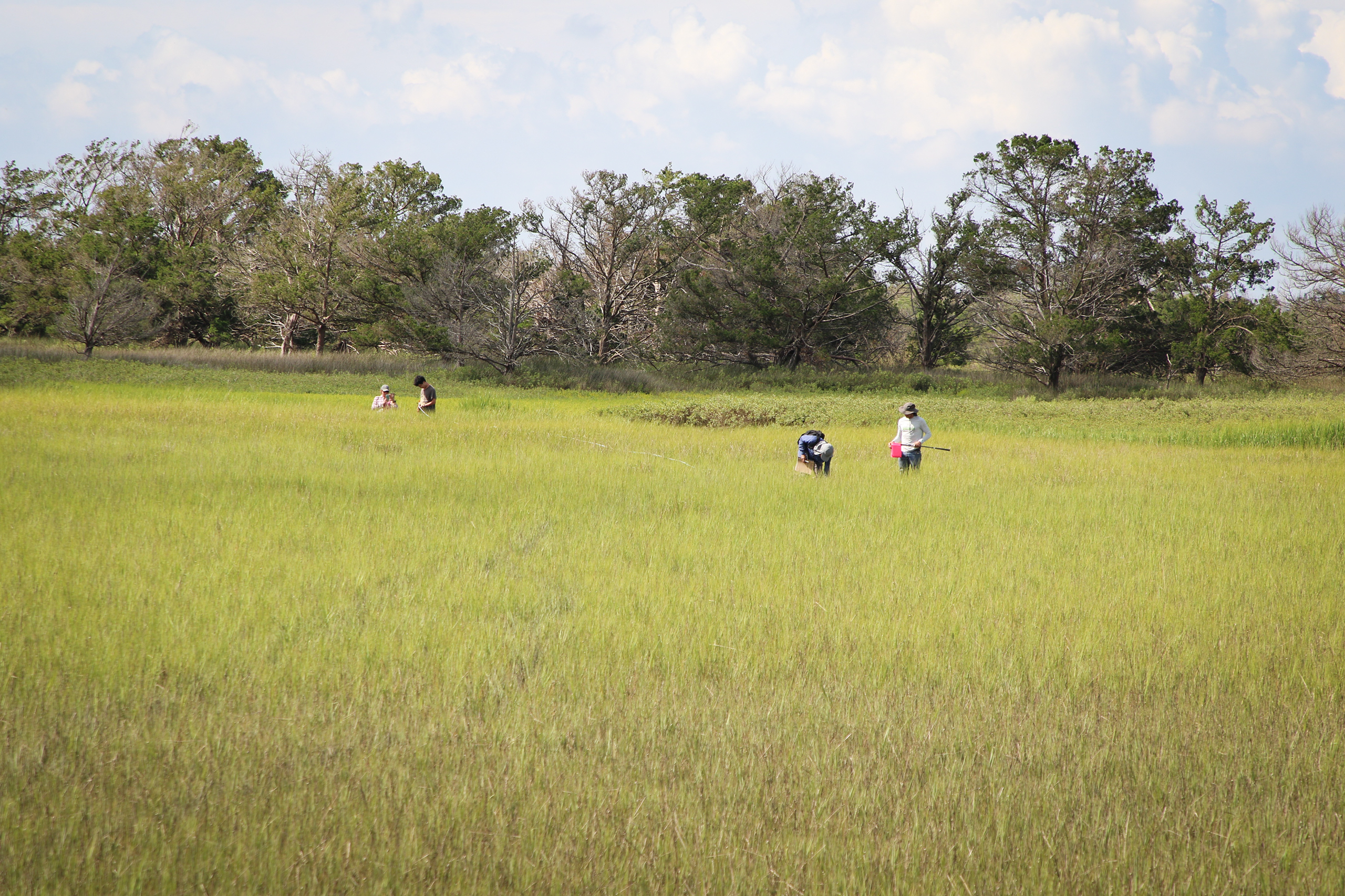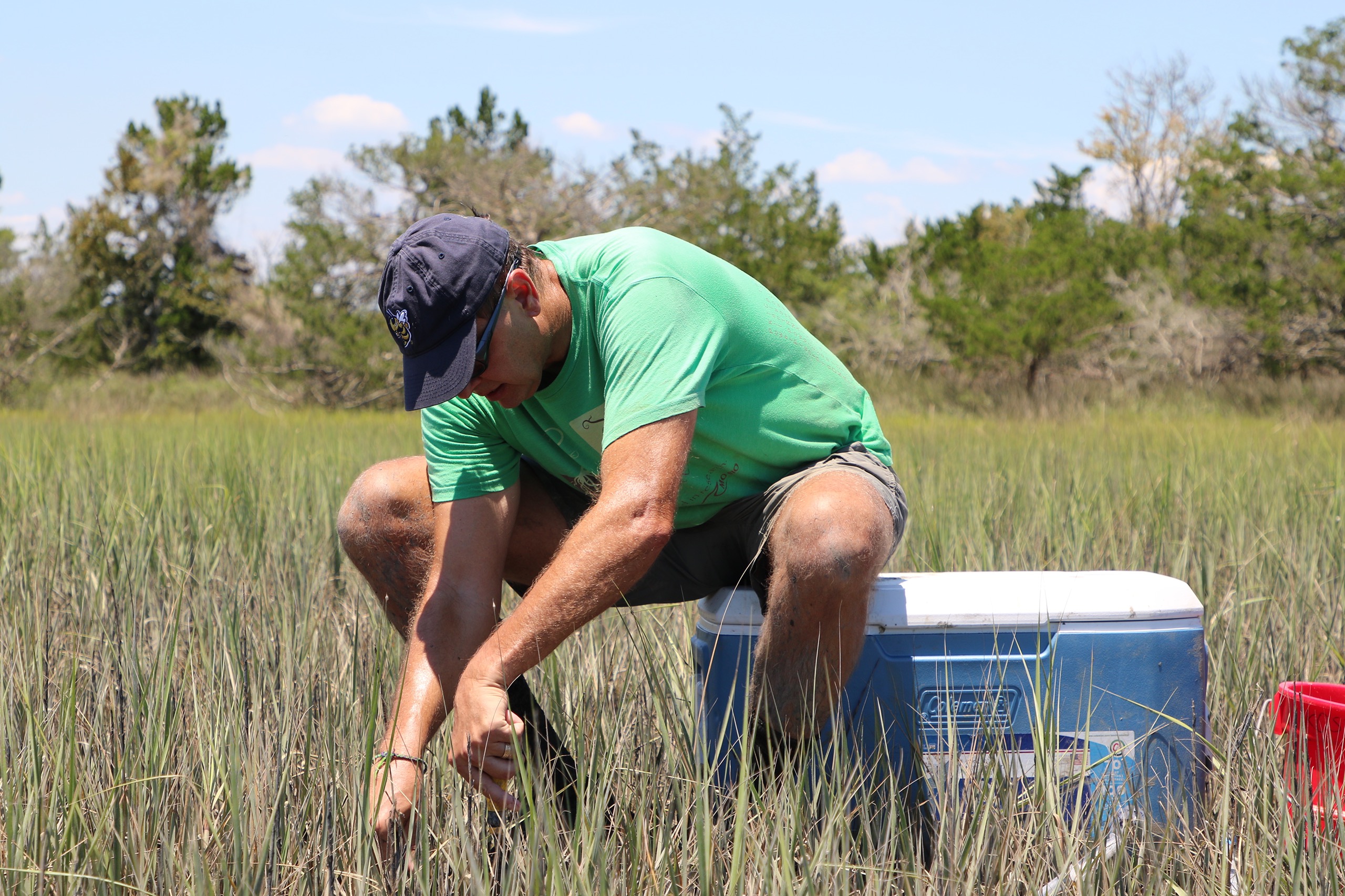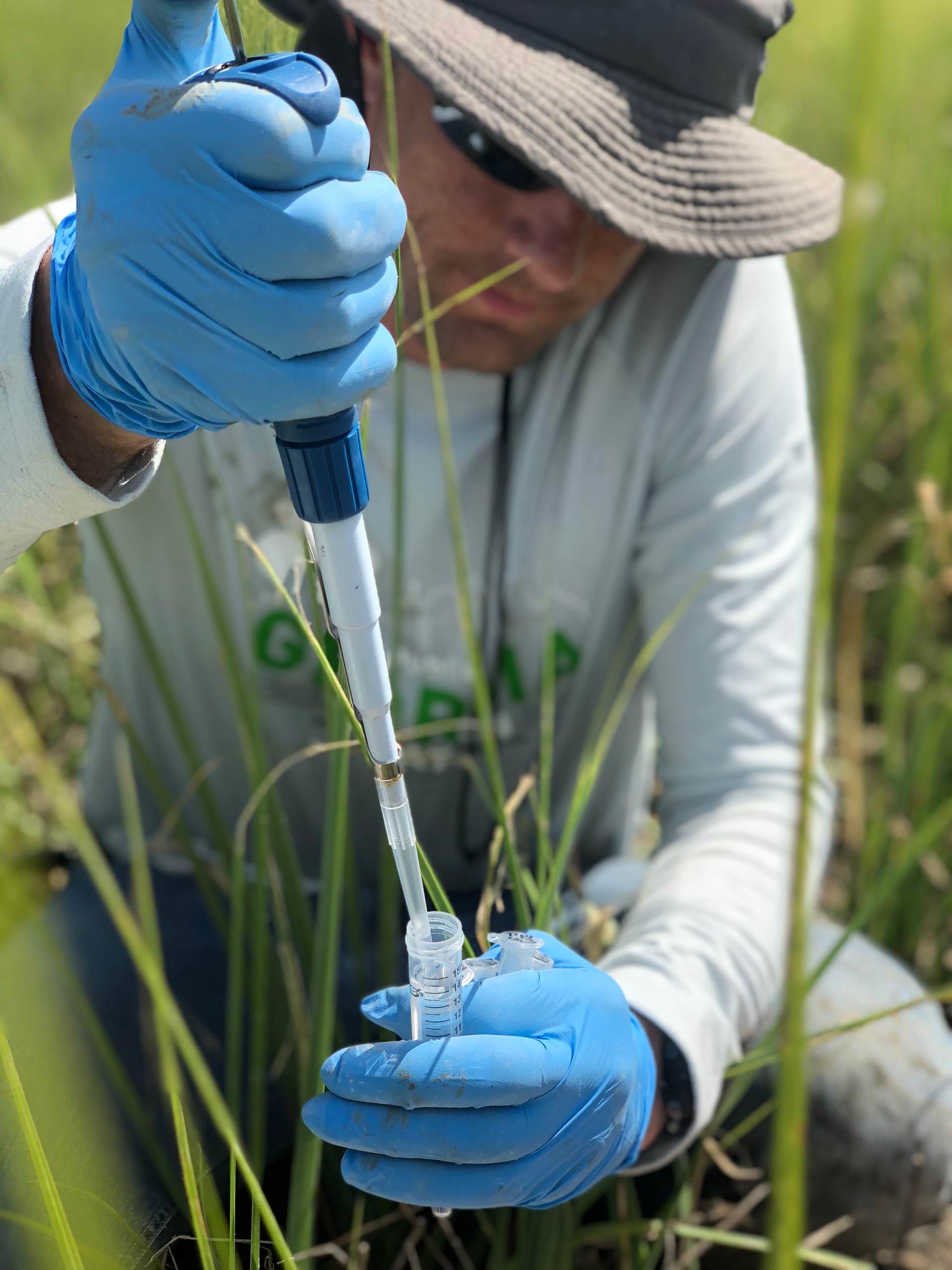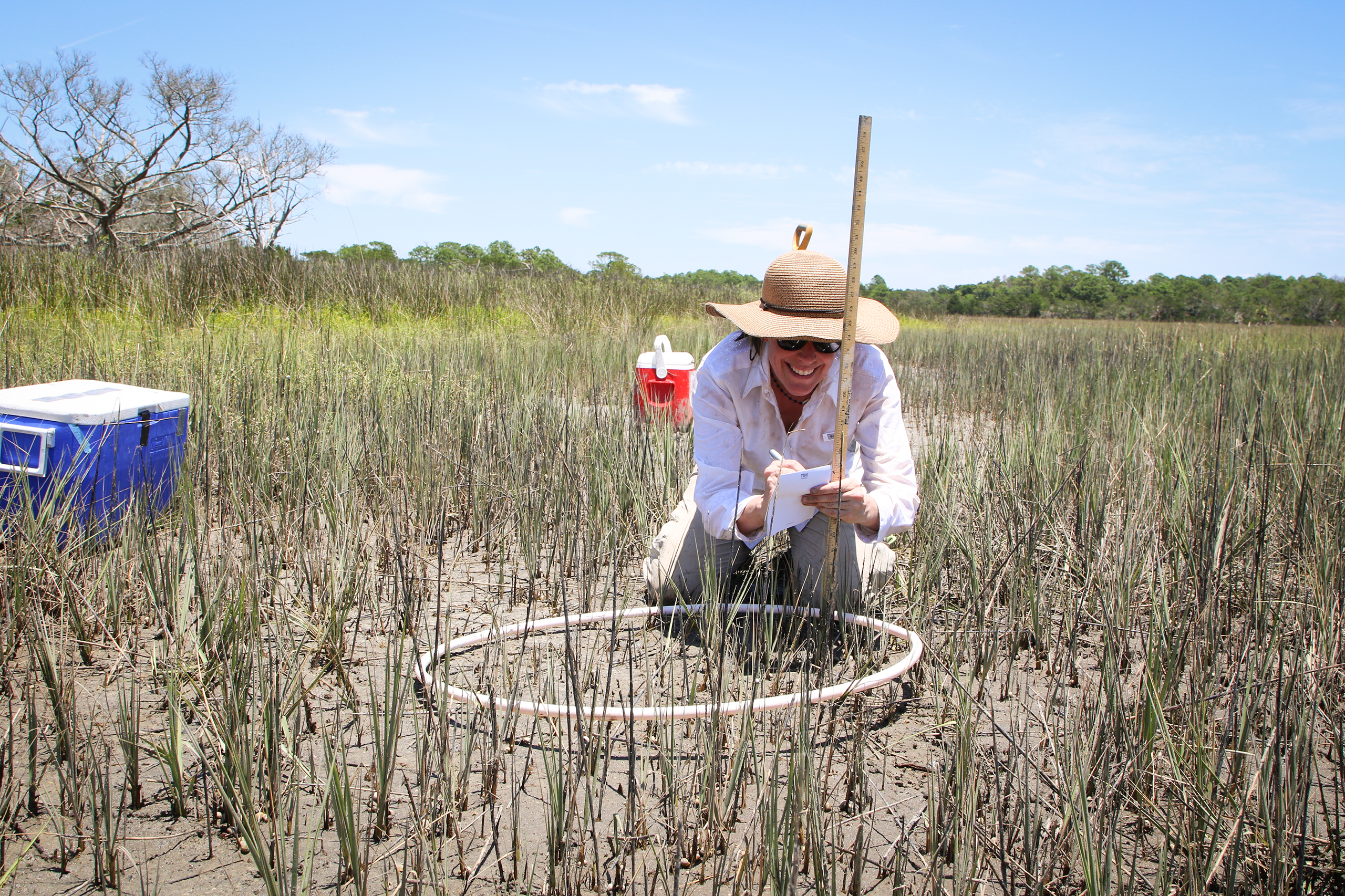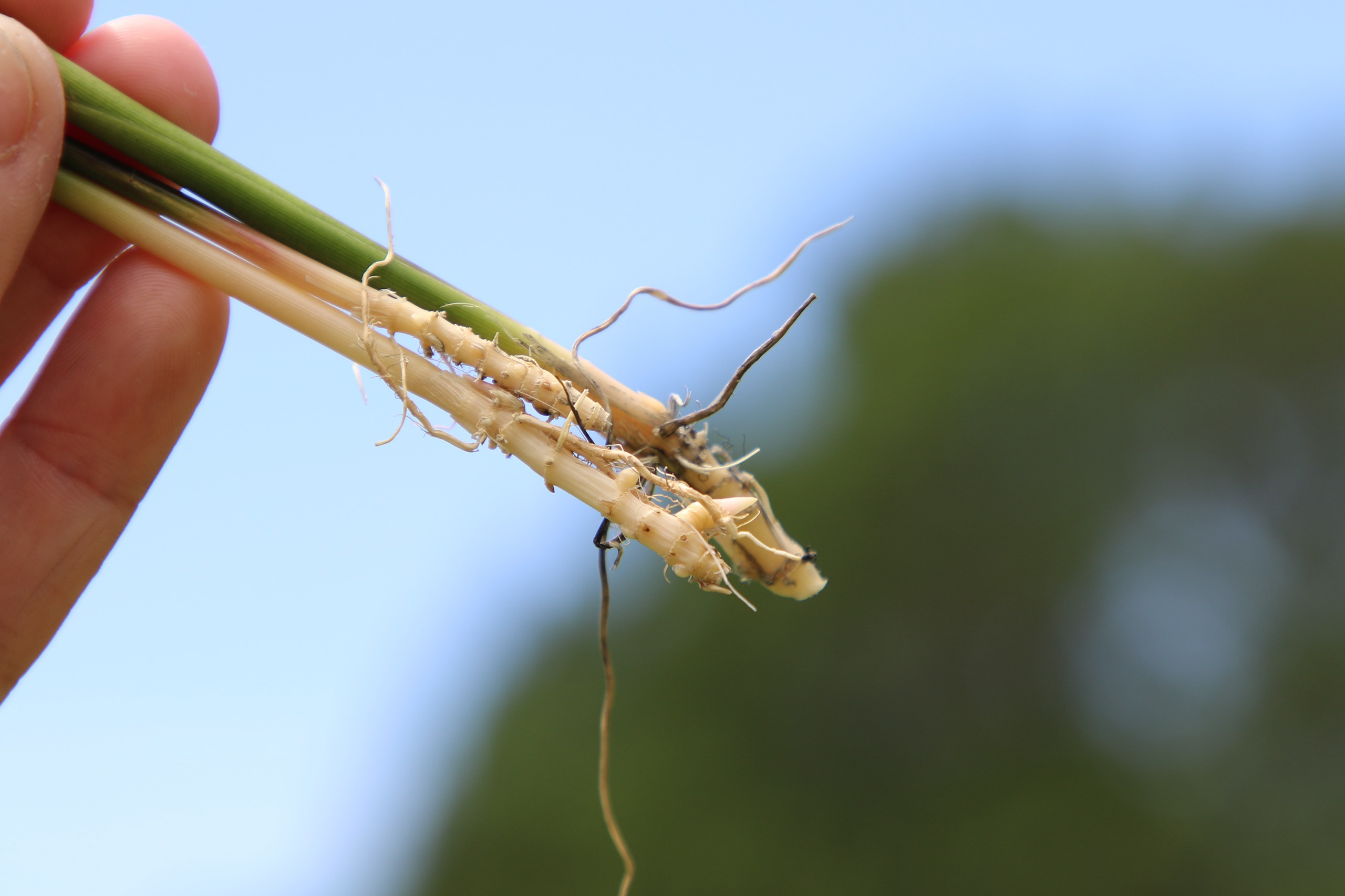Editor’s Note: This story was written by Emily Woodward, public relations coordinator for Marine Extension and Georgia Sea Grant. It was originally published in the UGA Marine Extension and Georgia Sea Grant Newsletter Volume 4, issue 5.
Four coolers, two shovels, countless sampling vials and five people pile into a vehicle headed to a secluded salt marsh on Sapelo Island, Georgia. It’s a surprising amount of equipment needed to study the microscopic community of organisms responsible for the health of Georgia’s most abundant coastal habitat, the salt marsh.
“Plant microbiome research, I always say, is about 10 years behind human microbiome research,” says Joel Kostka, jointly appointed professor of biology and earth and atmospheric sciences at Georgia Institute of Technology.
Roughly half of the cells in the human body are microbial. These microbes, mostly bacteria, all have different functions; some make us ill, but most keep us healthy by helping with digestion or preventing infection. Together, these microorganisms make up the human microbiome.
The same is true in the plant world, though little is known about plant microbiomes, particularly those associated with salt-tolerant coastal plants like Spartina alterniflora, which dominate Georgia’s salt marshes.
With funding from Georgia Sea Grant, Kostka is studying the microbes intimately associated with Spartina to better understand how the plant microbiome supports the health of Georgia’s salt marshes.
“In a way, this is discovery-based science because no one has studied the microbes that are intimately associated with these plants,” says Kostka. “When you look at the marsh from a large scale it really looks constant and consistent, but when you get down at the micro level you see all kinds of differences. There's a lot of complexity there.”
The research team wants to know how the microbial community changes as you move from the interior of the marsh, where the growth of Spartina is stunted and the plants are short, to the taller, lush marsh growing near the tidal creeks.
At the site, they measure salinity, oxygen, and pH as well as the height and density of Spartina at different spots along a transect. A hole punch is used to collect samples of Spartina blades, which will be measured for nutrients, like phosphorous and nitrogen. Soil samples and root material are taken back to the lab where the latest gene sequencing and metagenomics methods will be used to identify individual microbes and understand the microbial processes that improve the health of the plant.
“We have a number of parameters that we can measure to determine whether the plants are healthy, and then we go in and look at the microbes in more healthy plants versus less healthy plants, and see how those microbes are changing,” says Kostka.
It’s a lot of data to collect and the work isn’t easy, especially when trudging through knee-high marsh mud in 90-degree temperatures.
Luckily, Kostka has an extra set of hands to help with the sampling.
Elisabeth Pinion, an AP environmental science teacher from Cumming, Georgia, is working alongside Kostka and his team. Pinion is one of 16 educators participating in Schoolyard Program of the NSF-supported Georgia Coastal Ecosystems (GCE) Long Term Ecological Research (LTER) Project, which is hosted every summer at the University of Georgia Marine Institute on Sapelo Island. As part of the program, teachers spend a week on the coast, shadowing different researchers in the field and learning about sampling methods and processes that can be taken back to the classroom.
Pinion recognized similarities between the topics she covers in class and the research methods used for this project.
“Studying parameters that determine the productivity of different ecosystems is something that we generally spend a lot of time on,” says Pinion. “What they are looking at is very applicable to the classroom.”
Throughout the week, Kostka will have the opportunity to engage multiple educators in the field, showing him or her how they collect samples for microbiology and discussing the important ecosystem services that salt marshes provide.
"The Schoolyard Program is a great way to give the teachers a behind-the-scenes look at how science is conducted, including sometimes having to rethink your strategy once you get out in the field," said Merryl Alber, professor of marine sciences at UGA and lead PI of the GCE LTER project. "It’s also beneficial for researchers, who have a chance to interact with the teachers and think creatively about how to bring the science back into the classroom.”
Kostka recognizes the importance of making his research accessible to educators and students, which is why he used a portion of his Georgia Sea Grant funding to support three of the educators participating in the Schoolyard Program.
The trip to Sapelo is the first of many trips the research team will make to the coast. They plan to sample sites at two other barrier islands; Tybee Island and St. Simons Island, in the coming months.
Kostka hopes results from the project can be used to develop innovative methods for improving salt marsh restoration practices in Georgia. One example would be to create plant probiotics that could be applied to Spartina seedlings when planting new marshes.
“We could grow beneficial microbes in the lab and add them to the naked roots during planting, which would help the plant to take hold in the intertidal zone,” says Kostka.
“With sea level rise and increased coastal development, restoration activities will be more important to maintaining the productivity of Georgia’s marshes,” says Mark Risse, director of Marine Extension and Georgia Sea Grant.
“Funding research like this, that helps us improve attempts to establish native vegetation, will inform future restoration projects and hopefully make them more economically and environmentally efficient.”
For More Information Contact
A. Maureen Rouhi, Ph.D.
Director of Communications
College of Sciences

